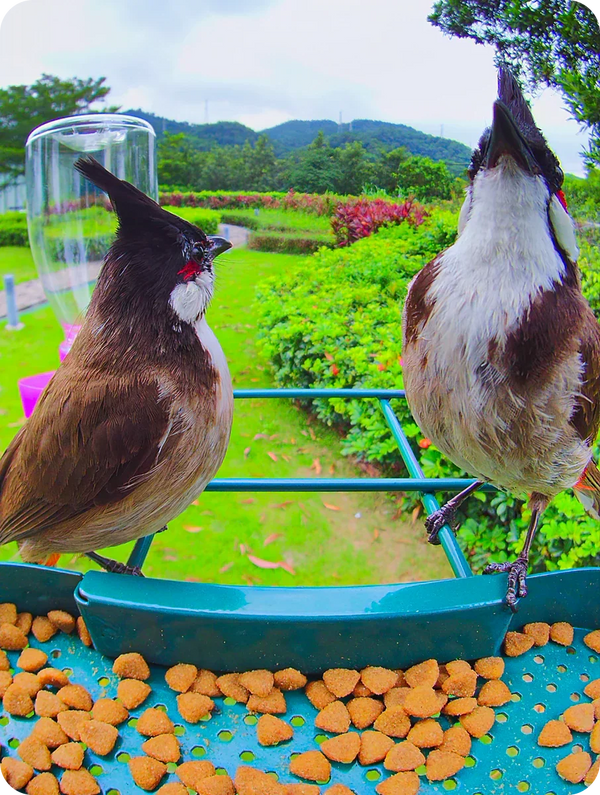Unlock the Secret to Attracting Hummingbirds to Your Garden!
Hummingbirds are enchanting creatures that bring a touch of magic to any garden. Their iridescent feathers and incredible agility as they hover in mid-air while sipping nectar make them a delight to observe. Beyond their beauty, hummingbirds play a critical role in the ecosystem as pollinators, helping to fertilize flowers and maintain plant diversity. In this article, we will guide you through the process of setting up a hummingbird feeder effectively to attract these fascinating birds to your outdoor space. By creating a welcoming environment for hummingbirds, you'll enjoy the dual benefits of enhanced pollination in your garden and the sheer joy of birdwatching.

Understanding Hummingbird Feeding Habits
Hummingbirds primarily feed on nectar, which provides them with the energy needed for their high metabolism. They are particularly attracted to brightly colored flowers, especially those in shades of red, orange, and pink. Some of their favorite nectar-rich flowers include trumpet vine, bee balm, and salvia. A well-placed hummingbird feeder can supplement their diet, especially during times when natural food sources may be scarce. Interestingly, hummingbirds also consume small insects and spiders for protein, which is vital for their growth and development. Understanding these feeding habits is essential for creating a hummingbird-friendly garden.
Choosing the Right Hummingbird Feeder
When it comes to selecting a hummingbird feeder, there are several types to consider, each with its own advantages and disadvantages. Tube feeders are the most common and are designed to mimic the shape of flower tubes, attracting hummingbirds effectively. Dish feeders, on the other hand, are shallow and easy to clean, but they may require more frequent refilling as they can dry out quickly. Window feeders offer a unique opportunity to observe hummingbirds up close but may attract fewer birds in larger gardens. Consider your garden size, the level of bird activity, and your personal preferences when choosing the right feeder for your space.
Step-by-Step Guide to Setting Up Your Hummingbird Feeder
Setting up your hummingbird feeder is a straightforward process that can be accomplished in just a few simple steps. First, choose a feeder that suits your garden and is easy to clean. Next, prepare a nectar solution by mixing four parts water with one part granulated sugar. Avoid using honey, artificial sweeteners, or red dye, as these can be harmful to hummingbirds. Boil the mixture for a few minutes to eliminate any impurities, then let it cool to room temperature. Fill the feeder with the nectar, ensuring you leave some space at the top to prevent spills. Before hanging the feeder, clean it thoroughly with hot soapy water to eliminate any lingering residues from previous use.
Location and Positioning Tips
Choosing the right location to hang your hummingbird feeder is crucial for attracting these birds. Ideally, place the feeder near flowering plants to create a natural feeding area. Hummingbirds prefer feeders that are in partial shade, as direct sunlight can cause the nectar to spoil quickly. Ensure that the feeder is easily visible to the birds and accessible for regular maintenance. A spot near a window can provide a wonderful view for you as you watch them feed, but make sure it is also safe from potential predators.
Maintaining Your Hummingbird Feeder
Regular maintenance is key to keeping your hummingbird feeder in good condition and ensuring the health of the birds. Clean your feeder at least once a week, or more frequently during hot weather, to prevent mold and bacteria growth. Disassemble the feeder and wash all parts with hot, soapy water, then rinse thoroughly. Refill the feeder with fresh nectar, discarding any leftover from the previous fill. By maintaining a clean feeder, you will provide a safe and healthy feeding environment that encourages hummingbirds to return regularly.
Creating a Hummingbird-Friendly Garden
Attracting hummingbirds to your garden can bring immense joy and beauty to your outdoor space. By understanding their feeding habits, selecting the right feeder, and maintaining it properly, you can create an inviting environment for these incredible birds. Remember to be patient, as it may take some time for them to discover your feeder. Enjoy the process of observing these remarkable creatures as they flit about, providing both a spectacle and invaluable pollination services to your garden.










تعليقات